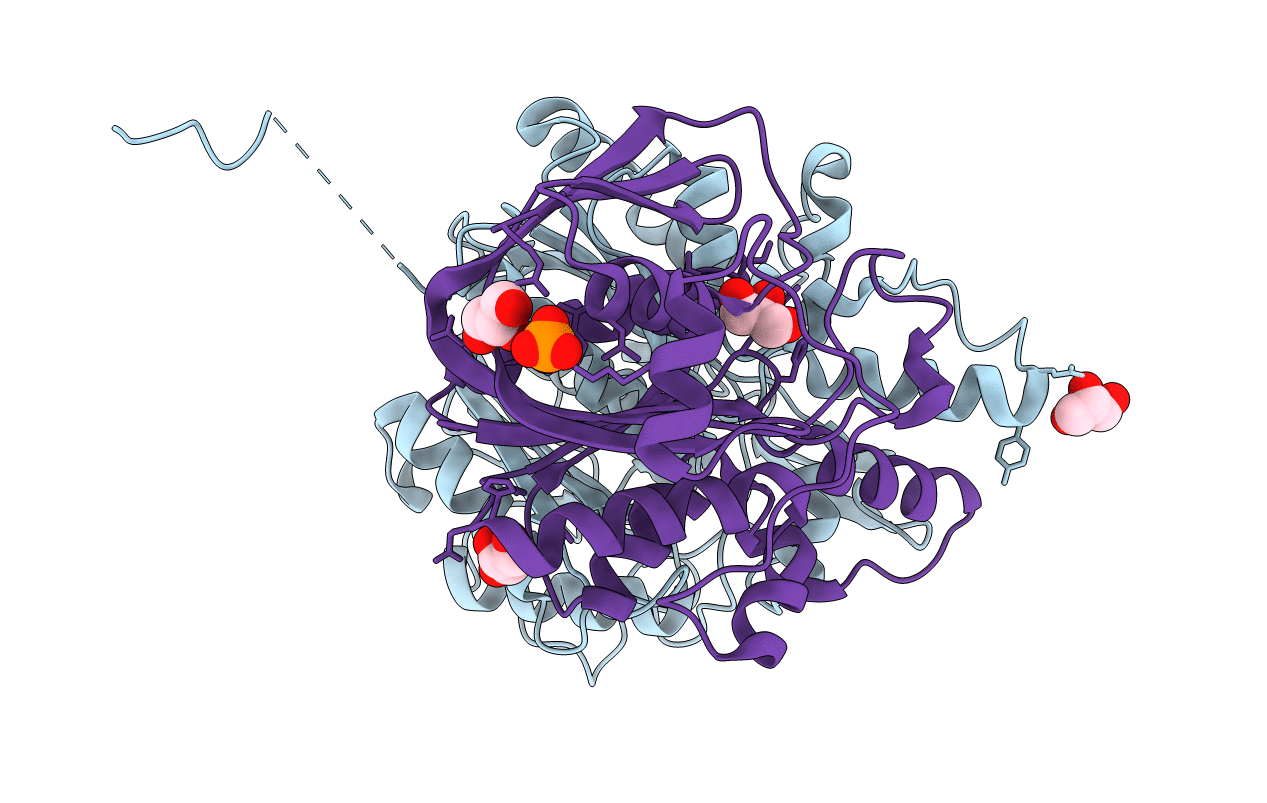
Deposition Date
2019-02-21
Release Date
2019-04-03
Last Version Date
2024-01-24
Entry Detail
PDB ID:
6QSP
Keywords:
Title:
Ketosynthase (ApeO) in Complex with its Chain Length Factor (ApeC) from Xenorhabdus doucetiae
Biological Source:
Source Organism:
Xenorhabdus doucetiae (Taxon ID: 351671)
Host Organism:
Method Details:
Experimental Method:
Resolution:
1.45 Å
R-Value Free:
0.16
R-Value Work:
0.12
R-Value Observed:
0.13
Space Group:
P 1 21 1


